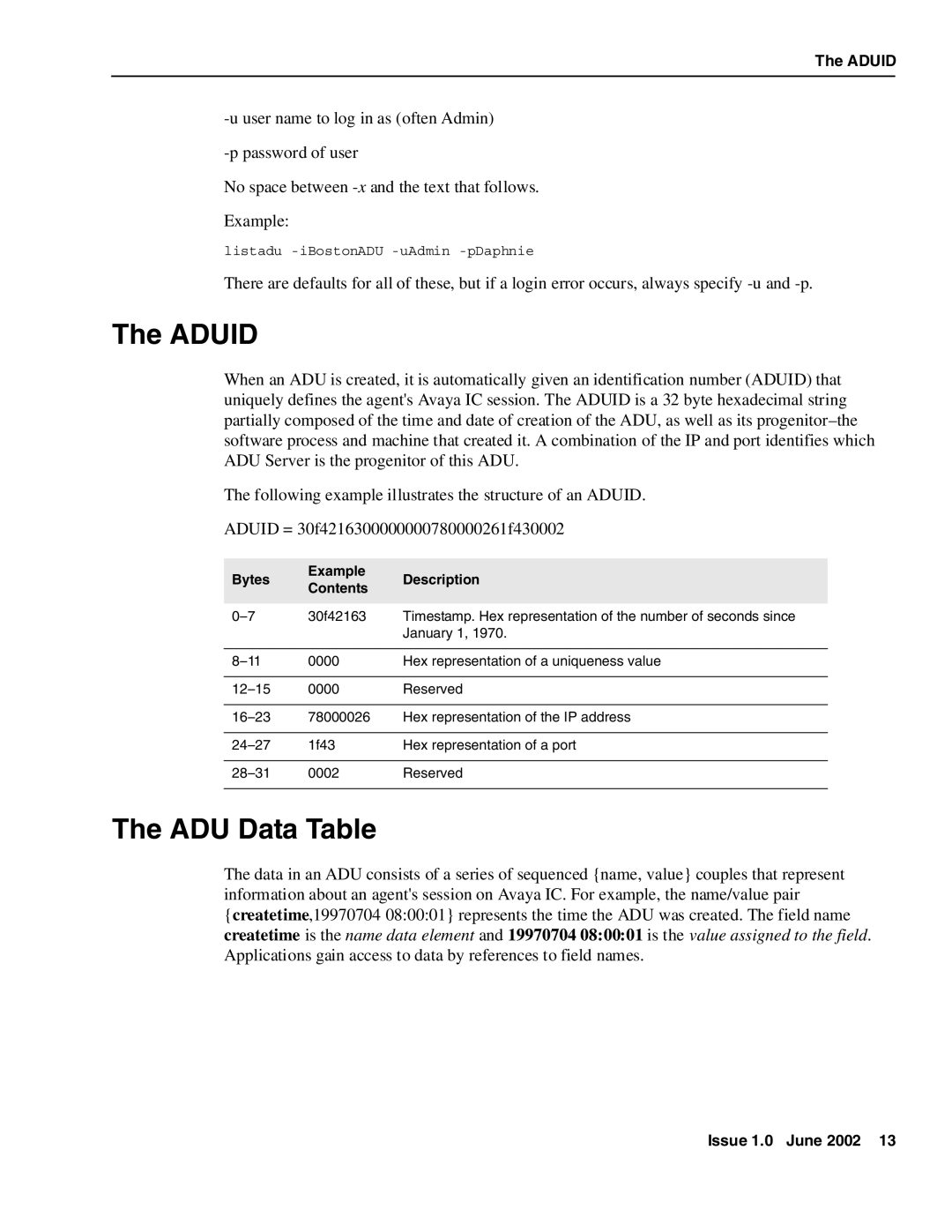The ADUID
No space between
Example:
listadu
There are defaults for all of these, but if a login error occurs, always specify
The ADUID
When an ADU is created, it is automatically given an identification number (ADUID) that uniquely defines the agent's Avaya IC session. The ADUID is a 32 byte hexadecimal string partially composed of the time and date of creation of the ADU, as well as its
The following example illustrates the structure of an ADUID.
ADUID = 30f4216300000000780000261f430002
Bytes | Example | Description | |
Contents | |||
|
| ||
|
|
| |
30f42163 | Timestamp. Hex representation of the number of seconds since | ||
|
| January 1, 1970. | |
|
|
| |
0000 | Hex representation of a uniqueness value | ||
|
|
| |
0000 | Reserved | ||
|
|
| |
78000026 | Hex representation of the IP address | ||
|
|
| |
1f43 | Hex representation of a port | ||
|
|
| |
0002 | Reserved | ||
|
|
|
The ADU Data Table
The data in an ADU consists of a series of sequenced {name, value} couples that represent information about an agent's session on Avaya IC. For example, the name/value pair {createtime,19970704 08:00:01} represents the time the ADU was created. The field name createtime is the name data element and 19970704 08:00:01 is the value assigned to the field. Applications gain access to data by references to field names.
